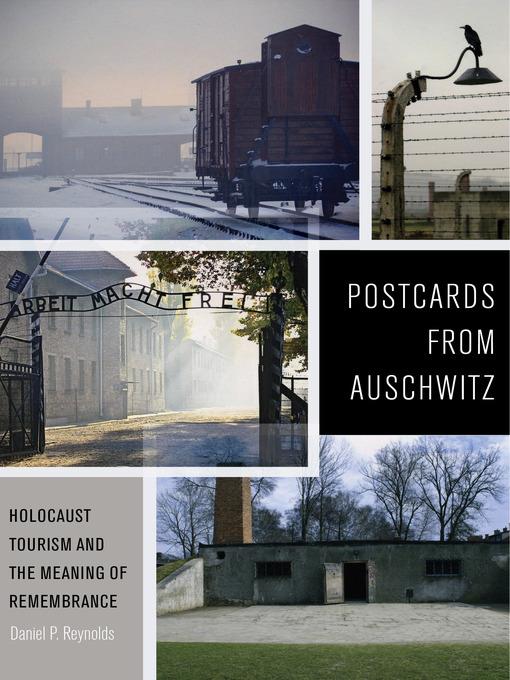
Postcards from Auschwitz
Holocaust Tourism and the Meaning of Remembrance
- اطلاعات
- نقد و بررسی
- دیدگاه کاربران
نقد و بررسی

Starred review from February 12, 2018
Reynolds, professor of modern languages at Grinnell College, incisively scrutinizes the intersection of tourism and Holocaust remembrance in this revealing book. He first questions how sites associated with the Holocaust interact with the tourism industry, defending that industry against claims that all disaster tourism is superficial or voyeuristic. He then discusses how representations of the Holocaust at heavily visited locations (such as Auschwitz and Dachau) have evolved over time as knowledge and political agendas have changed, addressing specifically the “memory boom” of the 1990s that helped spur the refashioning of many sites into museums. At lesser-known sites, such as Chelmno and Sobibor, he explores the different approaches to preservation and discusses whether commemoration alters history. Cities central to the Holocaust enter his view, too, as Reynolds outlines the dilemmas in Warsaw posed by the desire to commemorate both Polish Catholic and Jewish victims of Nazi aggression while acknowledging Polish complicity. In Berlin, “counter-memorials” (purposefully inconspicuous memorials that aim to question the idea of memorialization) invite alternative interpretations of history, while Israel’s Yad Vashem offers a redemptive narrative for those lost during the Holocaust and Washington, D.C.’s Holocaust Museum reveals, in Reynolds’s view, an anxiety about Holocaust memory in a period when eyewitnesses are dying. Reynolds covers a wide range of issues, handling his subject carefully and thoroughly. While he sometimes belabors his points, he raises important questions about history, tourism, and genocide.

April 1, 2018
Reynolds (modern languages, Grinnell Coll., IA) argues for the possibilities for tourism to produce ongoing engagement with the past. The author maintains that postcards from Holocaust memorials, are at best merely bragging testimonials to one's trip abroad or simply a money-making enterprise for the continued support of the memorial. The lengthy introduction is a "historiography" or "tourisismography"--discussion of various theories and methods of understanding the industry. Reynolds provides a thorough description of nearly all of the Holocaust memorials throughout the world, including when and how they were built. The result is a helpful addition to tourism literature in general, and specifically beneficial in understanding the popularity of modern-day tourism at sites dedicated to the victims of Nazi terror. VERDICT This should be required reading for anyone contemplating a trip to places of remembrance, such as the United States Holocaust Memorial Museum or the Auschwitz and Dachau death camps in Europe. Reynolds effectively tells how history and tourism intersect and provides a starting point for more research on dark tourism.--Harry Willems, Great Bend, KS
Copyright 2018 Library Journal, LLC Used with permission.

An academic study of the nascent discipline of "Holocaust tourism."To conduct his research, Reynolds (Modern Languages/Grinnell Coll.) visited the sites once devoted to the destruction of all European Jews and others who were offensive to the Nazi regime, traveling to the museums, monuments, and attractions dedicated to the millions murdered by the Third Reich. He joined the crowds that arrive at the archetypal death camp at Auschwitz-Birkenau, which "saw records attendance in 2016, receiving more than two million visitors from all over the world"--and where visitors can purchase postcards that showcase evidence of the atrocities that occurred so many decades ago. "What remains to be seen," writes the author, "is whether these visitors take any lessons with them after they leave." Reynolds also journeyed to Majdanek, Sobibr, and Treblinka and toured the monuments in Warsaw, Poland, where law now forbids any hint of Polish culpability in Nazi crimes. In Berlin, the author went to the House of the Wannsee Conference and explores the latest "countermonuments." His tour continued at the prodigious Yad Vashem complex in Jerusalem, and the last stop was the United States Holocaust Memorial Museum in Washington, D.C., where some observers have found cause for concern about the Americanization of the Holocaust. The author's astute text does not invite a cursory reading; his penchant for academic prose and prolixity will appeal primarily to scholars. Throughout, the author depicts a graphic journey of discovery that reveals bits of kitsch and many troubling questions: Do Holocaust tourists come as casual sightseers or as pilgrims? Where is evidence, in those dedicated places, of redemption? Soon there will be no survivors of the Holocaust; what will the places, monuments, and museums tell future generations? Unlike Tim Cole in his 1999 book Selling the Holocaust, Reynolds remains sanguine about the efficacy of Holocaust tourism. A diligent, sometimes-laborious study of the necessity and uses of Holocaust tourism.
COPYRIGHT(2018) Kirkus Reviews, ALL RIGHTS RESERVED. (Online Review)




دیدگاه کاربران